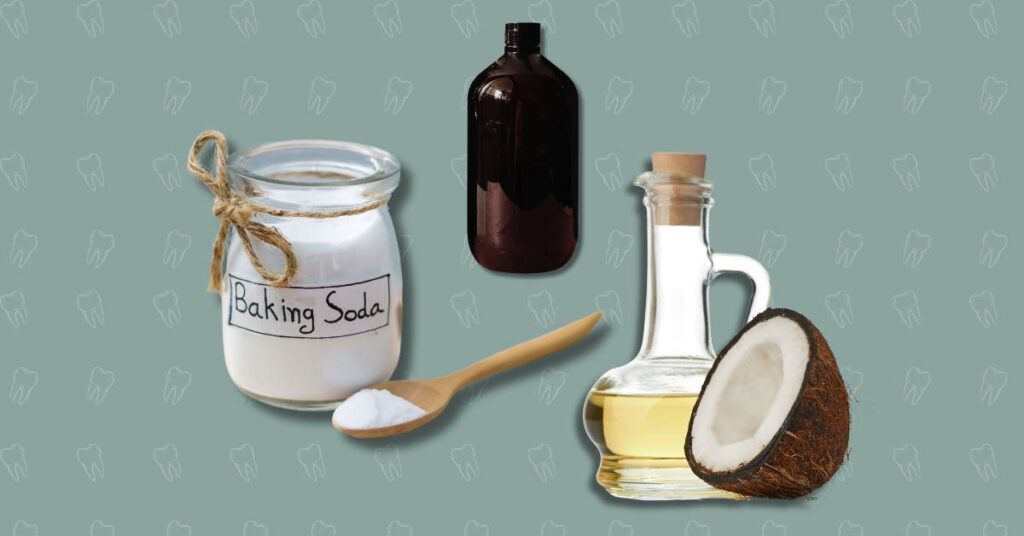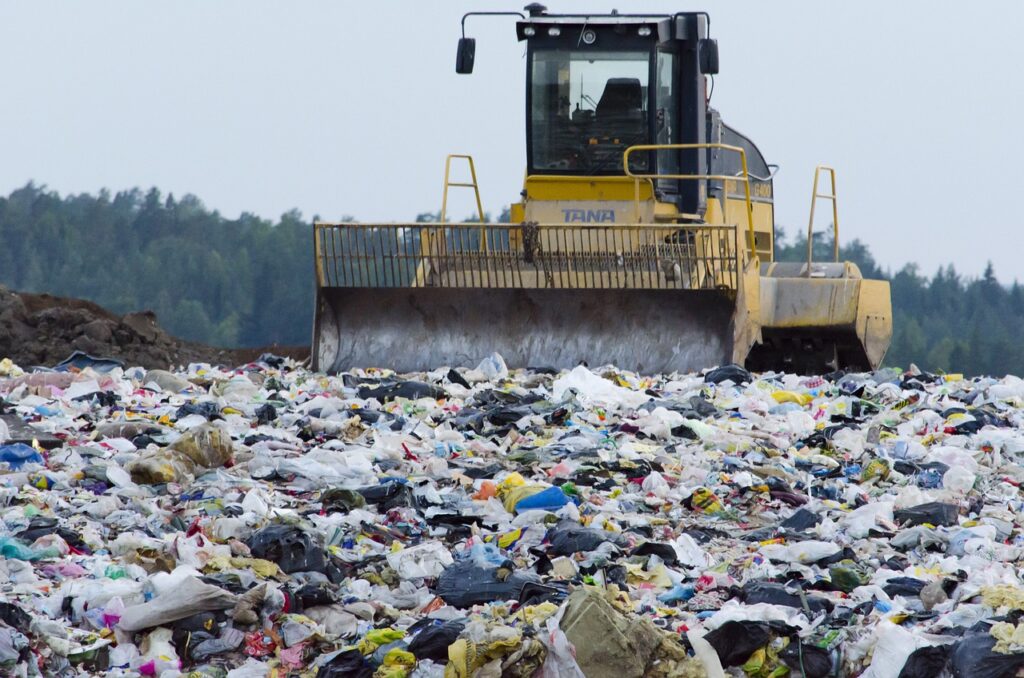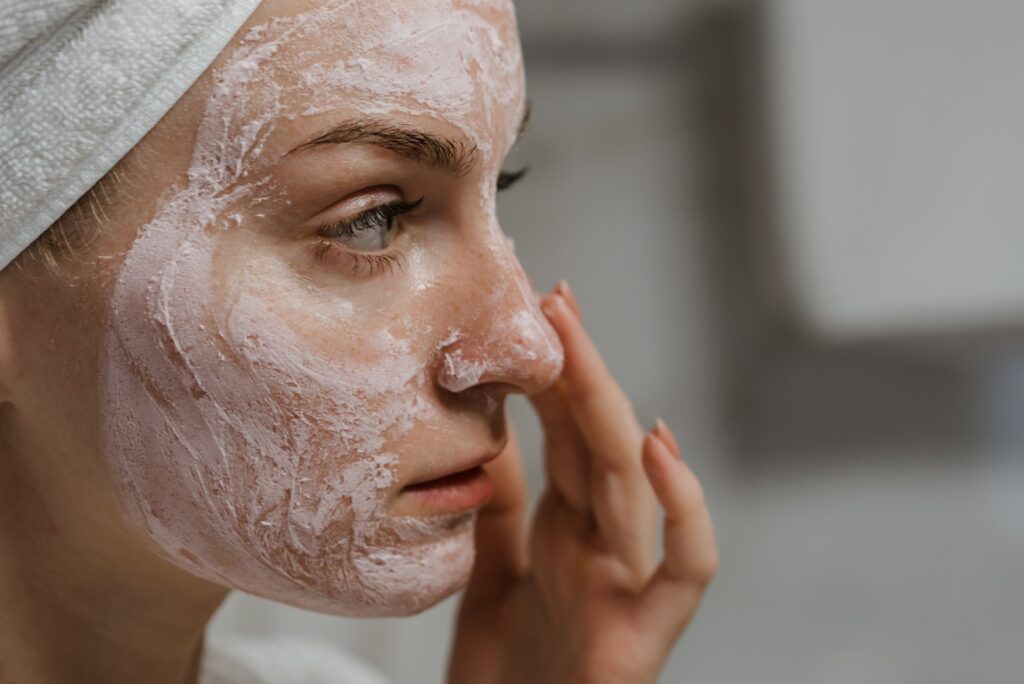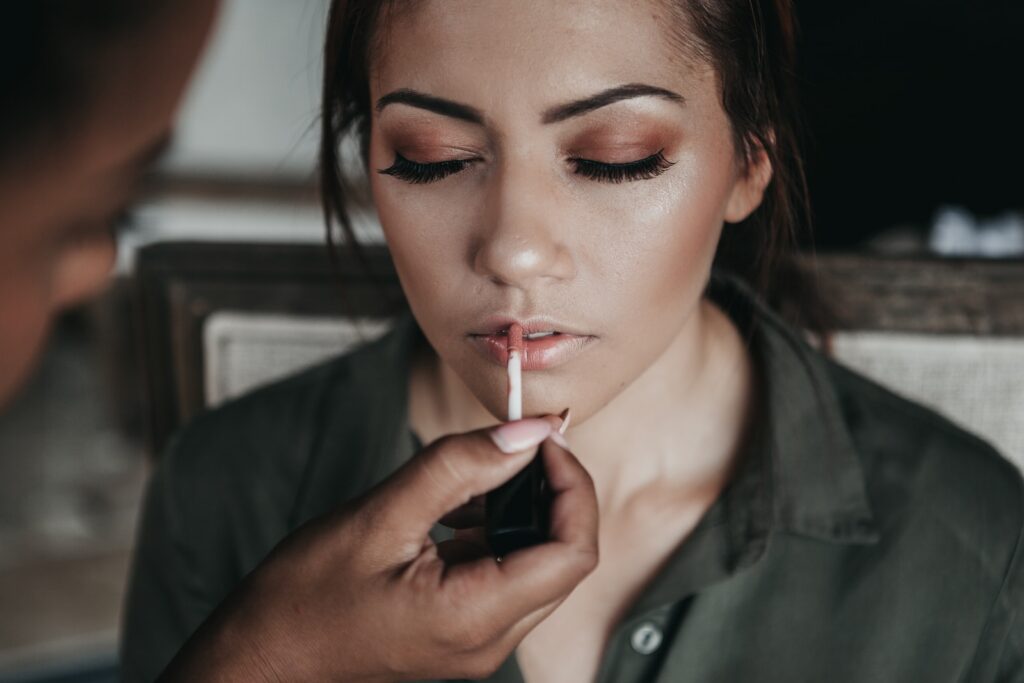Are you on the lookout for a more natural way to keep your smile bright and your teeth squeaky clean? You’re not alone! Many of us are turning our backs on conventional toothpastes in search of gentler, more earth-friendly alternatives. Here, I will guide you through some of the best natural traditional toothpaste alternatives.
Why Go Natural?
In our quest for cleaner teeth and healthier mouths, it’s natural (pun intended) to wonder: Why choose natural toothpaste alternatives?
Well, it turns out that conventional toothpaste can contain a whole bunch of ingredients that sound more at home in a chemistry lab than in your bathroom.
Some of these components can be harsh, from artificial sweeteners to surfactants, especially if you have sensitive gums or are striving for a more eco-conscious lifestyle. On the other hand, toothpaste alternatives often utilize ingredients that are safe, effective, and gentler on your mouth and the planet.
The information provided here is not medical advice. Before trying any toothpaste alternative, consult your dentist to ensure it’s right for you.
What Are Some Natural Ingredients to Look For?
When you’re browsing through options, knowing what ingredients to look for can be a game-changer.
Ingredients like baking soda or coconut oil offer antibacterial properties and ensure that your breath stays fresh without the need for harsh chemicals. But how do these ingredients stand up when it comes to cleaning your teeth?


Help me get started!
Do you want to live a less-toxic, more eco-friendly lifestyle but have no idea where to begin? Here’s our “Non-Toxic 101” guide to get you started today!


Can Baking Soda Really Clean My Teeth?
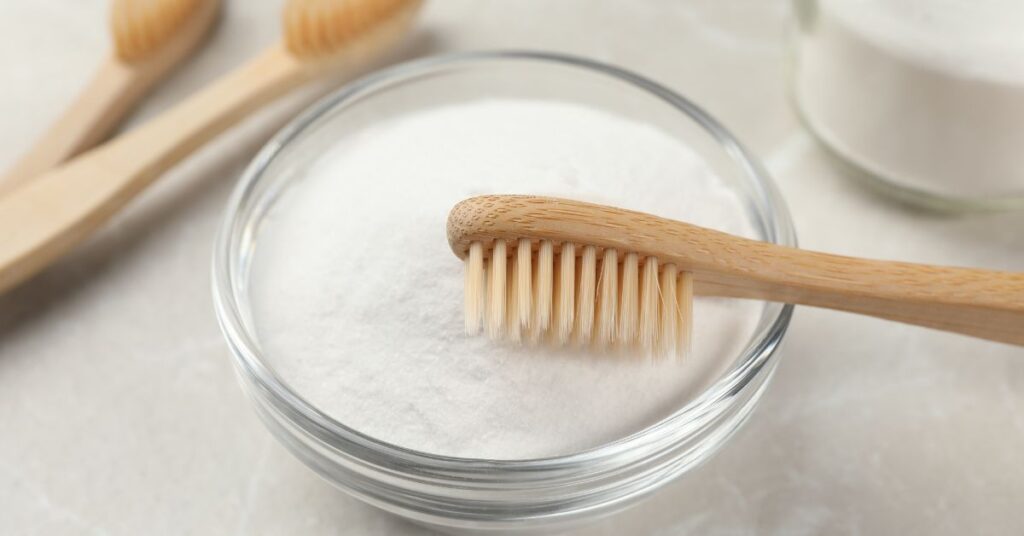

Yes! Baking soda is a bit of a dental care superhero.
It’s mildly abrasive, which means it’s excellent at scrubbing away plaque and surface stains.
Plus, it’s alkaline, which neutralizes acids in your mouth, reducing the risk of tooth decay and gum disease.
While baking soda is great, it’s meant to be used sparingly so you don’t damage your enamel.
I like to use it once every couple of weeks. My preferred method is to pour a little baking soda into my palm, add a bit of water to dilute it, mix it with my toothbrush, and then brush. Easy!
So, if you’re looking for a simple, effective way to maintain oral health, baking soda might be your new best friend.
Is Coconut Oil Pulling the Secret to a Healthier Mouth?


You might have heard of “oil pulling” – an ancient practice that involves swishing oil, typically coconut oil, around in your mouth.
The proposed benefits of oil pulling is its ability to reduce harmful bacteria, whiten teeth, and even improve gum health and fight gingivitis.1 Some swear by this method.
However, the American Dental Association states that there is not enough evidence to support oil pulling as an alternative to regular brushing and flossing.2
While oil pulling won’t hurt you and is worth a try, more studies are needed to confirm its usefulness in improving dental health.
To oil pull, use a tablespoon of edible oil—most prefer coconut oil—and swish in the mouth for 1-20 minutes, then spit.
What About Using Hydrogen Peroxide for Pearly Whites?
Over-the-counter whitening products often bleach teeth with hydrogen peroxide or carbamide peroxide.
To avoid any added chemicals from these products, you can make your own hydrogen peroxide solution by mixing two ounces of 3% hydrogen peroxide with two ounces of water and swishing it in the mouth for two minutes.3 Be sure not to swallow the solution or use a higher than 3% hydrogen peroxide.
Making a paste with baking soda and 3% hydrogen peroxide is also an option. Mix a teaspoon of 3% hydrogen peroxide with enough baking soda to make a smooth paste. Gently brush, spit, and rinse with water.4 I have used this method for years, once every few months, and find it very effective for removing surface stains and mild whitening.
What About Traditional Toothpaste Alternatives That Are More Like, Well, Regular Toothpaste?
Got you. Some terrific conventional toothpaste alternatives on the market today are safe and effective for daily use. Here are a few favorites:
Davids


David’s toothpaste trades fluoride for nano-hydroxyapatite to repair sensitive teeth and remineralize enamel.
While the American Dental Association still considers fluoride the gold standard, nano-hydroxyapatite is regarded as a valid alternative. It is the ingredient considered the gold standard for oral care in Japan.5
Nano-hydroxyapatite is a synthetic form of the mineral, hydroxyapatite, which is the main component of tooth enamel and bones.
Nano-hydroxyapatite has been found to be as effective as fluoride in remineralizing teeth and preventing demineralization.6
Davids toothpaste also contains peppermint oil and sodium bicarbonate (baking soda). It is naturally whitening and anti-plaque.
It’s vegan, free of artificial flavors, preservatives, colors, and sweeteners, SLS-free, fluoride-free, cruelty-free, and made in the USA.
With a commitment to sustainability, Davids packages their toothpaste in recyclable metal tubes that come with a convenient metal rolling key.
Davids Sensitivity and Whitening toothpaste is an Environmental Working Group Verified Product, which means it meets the EWG’s highest standard for health and safety.7
Boka
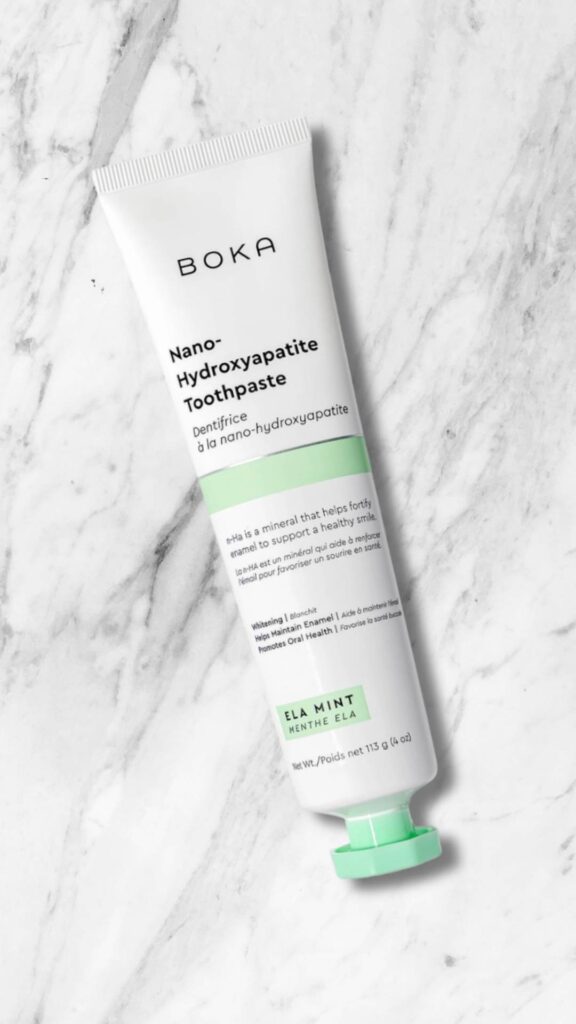

Boka is also made with nano-hydroxyapatite (n-Ha) to remineralize and fortify teeth and reduce sensitivity.
Boka toothpaste contains soothing aloe vera, bacteria-fighting Xylitol, green tea, and mint from essential oils.
The toothpaste is vegan and gluten-free, and the packaging is BPA-free.
It contains no sodium lauryl sulfate (SLS), fluoride, triclosan, artificial flavors, or parabens.
Boka does not test on animals.
Squigle
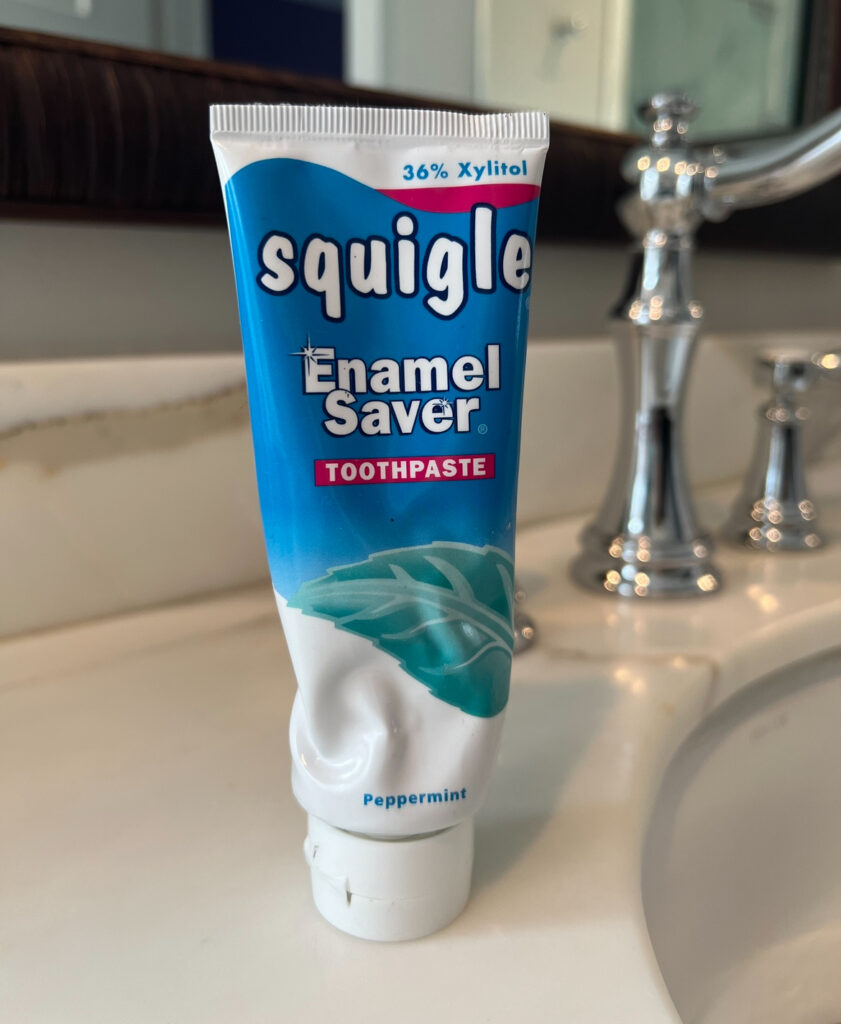

Years ago, I developed an awful rash around my mouth and nose that I later learned was perioral dermatitis.
So, I did what I do best: research. I learned that SLS found in most commercial toothpaste could contribute to perioral dermatitis.8
It was tough to find an alternative toothpaste back then. I was excited when I found Squigle and ordered it immediately. Within a week, my rash had subsided and, with continued use, never returned.
Squigle Enamel Saver is a fluoride toothpaste free from harsh abrasives, irritating tartar control agents, titanium dioxide, bleaches, and detergents like sodium lauryl sulfate or sodium laureth sulfate.
It uses natural Xylitol to inhibit the growth of plaque and cavity-causing bacteria.
In addition to perioral dermatitis, Squigle helps with bad breath and canker sores.
Squigle is also available in a fluoride-free Tooth Builder formula.
It’s made in the USA.
What Ingredients Should I Avoid in My Toothpaste?
❌Triclosan: Triclosan is an antimicrobial agent linked to bacterial resistance and endocrine disruption concerns.9
❌Sodium Lauryl Sulfate: Sodium lauryl sulfate is a common foaming agent in toothpaste associated with an increased risk of canker sores and perioral dermatitis, a skin rash around the mouth. It can be toxic to oral mucosal tissue.10
❌ Parabens: Widely used as preservatives in cosmetics, skincare, and personal care products, parabens can disrupt hormones, including estrogen, harm fertility, and potentially increase the risk of breast cancer.11
❌Artificial Colors: Some studies have suggested a link between artificial food dyes, including those used in toothpaste, and hyperactivity in children.12
❌Artificial Sweeteners: These have been linked to type 2 diabetes and cardiovascular disease.13
Ready to Make the Switch?
Switching to natural toothpaste alternatives can be a refreshing change, offering a gentler, more sustainable approach to oral hygiene. Whether you’re a DIY enthusiast ready to mix up your own concoction or prefer to purchase a ready-made hydroxyapatite toothpaste, the more natural options for healthy teeth are plentiful. Remember, the best choice is one that fits your lifestyle and meets your dental health needs. So, why not take the first step towards a brighter, healthier smile today?
Related Posts
15 Best Non-Toxic Dental Floss Brands
9 Best Eco-Friendly Toothbrushes: Electric and Manual
Best Eco-Friendly Deodorant: What You Need To Know
Sources
- Healthline ↩︎
- American Dental Association ↩︎
- Medical News Today ↩︎
- Medical News Today ↩︎
- American Student Dental Association ↩︎
- British Dental Journal ↩︎
- Environmental Working Group ↩︎
- Premier Medical Group and Delta Dental ↩︎
- Microb Drug Resist and Environ Polut ↩︎
- Frontiers in Dental Medicine and DermNet ↩︎
- Breast Cancer Prevention Partners and Environmental Working Group ↩︎
- Berkeley Public Health ↩︎
- World Health Organization ↩︎
